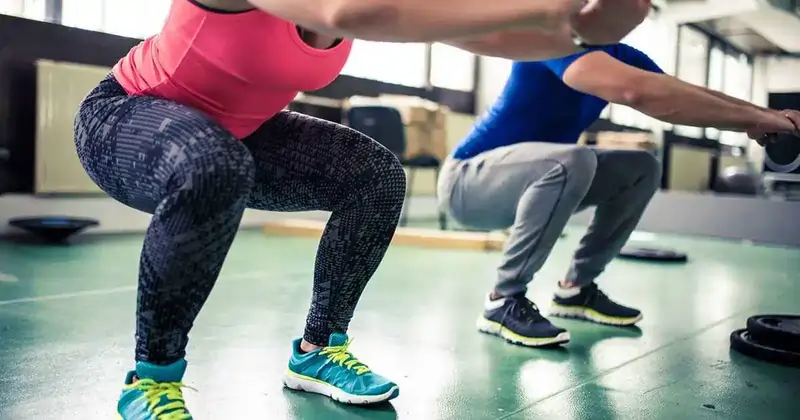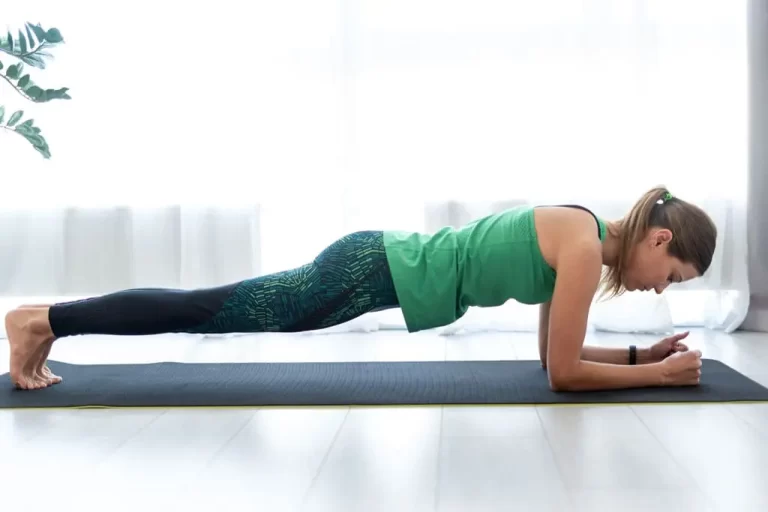12 Best Knee Stability Exercises
What is knee Stability Exercise?
Knee stability Exercises are an important aspect of any complete fitness program, especially for people who participate in activities that strain their knees. The primary goals of these exercises are to increase stability throughout, balance, coordination, and strength in the muscles surrounding the knee joint. You may improve your sports performance, lessen your chance of knee injuries, and help in the healing and recovery process by including Knee Stability Exercises in your program.
The knee joint is particularly sensitive to damage due to the strains it experiences during physical activity and its unique anatomy. Instability, higher joint stress, and a higher risk of injuries such as ligament sprains, strains, or tears can result from weakness or imbalance in the muscles surrounding the knee. The quadriceps, hamstrings, glutes, and other surrounding muscles that support and stabilize the knee are the muscles that are targeted by knee stability exercises to help treat these problems.
In addition to preventing injuries, knee stability exercises are beneficial for those who currently have knee issues, such as osteoarthritis or patellofemoral pain syndrome. These activities could improve general knee health by lowering pain and strengthening joint function.
Knee Stability Exercises are important for improving your general stability and building those muscles surrounding the knee joint.
Advantages of Knee Stability Exercise:
Knee stability Exercises provides several advantages for people of all ages and fitness levels. The primary benefits of including knee stability exercises in physical therapy are as follows:
- Better performance
knee stability exercises can be beneficial for athletes and others who play sports or engage in activities that involve frequent knee movement, such as sprinting, jumping, or twisting. By doing these exercises to increase balance, coordination, and sense of balance (awareness of body position), performance is improved and the chance of falls or accidents is decreased.
- Relief of knee pain
Knee stability exercises can help reduce pain and discomfort in those with osteoarthritis, patellofemoral pain syndrome, and other chronic knee pain problems. Increasing the strength of the muscles surrounding the knee can help to better support the joint, lessen the strain on the injured areas, or improve knee function in general.
- Improving Functional Movement
To strengthen the stability of the knee Exercises involve natural movements such as walking, bending, and climbing stairs. By strengthening and stabilizing your knee joint, these exercises can improve your ability to do routine tasks and reduce your risk of knee-related difficulties.
- Preventing injuries
Improved knee stability was achieved by exercising the muscles that surround the knee joint, namely the quadriceps, hamstrings, and glutes. It is possible to lower your risk of knee injuries such as ligament sprains or tears as well as patellofemoral pain syndrome by strengthening and stabilizing these muscles.
- Improved Coordination Stability
To maintain correct alignment and function during a variety of physical activities, strong and stable knee joints are necessary. knee stability exercise focuses on the ligaments, tendons, and muscles that support the knee joint, improving total joint stability and lowering the possibility of collapsing or instability.
Remember that the best prevention against injury and excessive effort is to practice knee stability exercises correctly and raise the difficulty level gradually. To create a customized exercise program that meets your goals, it’s advisable to speak with a certified physical therapist if you have any underlying knee ailments or concerns.
Getting Ready for Knee Stability Exercise:
It’s important to prepare for knee exercises, just like with other physical activities. A suitable warm-up could consist of five to ten minutes of light cardio, like walking or cycling, and then dynamic stretches that are similar to the activities you are going to do.
Knowing the boundaries of your body is also important. Start carefully if you’ve never exercised before, are returning to it after a break, or have an injury. To prevent overstressing your knees, gradually increase the time and intensity of your exercises. Always pay attention to your body’s signals; while some pain is natural, excessive or intense pain is a reason to stop and see an orthopedic physician.
Knee Stability Exercise:
Never forget to begin with a weight or degree of difficulty that pushes you but doesn’t result in severe pain. physical therapists or medical experts should be consulted before beginning any new exercise plan if you have any pre-existing knee issues or injuries.
Leg extensions
- Sit up straight in a long chair and place your leg on the floor or support to start.
- Tighten your thigh muscles, look forward, and raise one leg as high as you can to build strength without getting off the chair.
- Hold this position for a few seconds.
- Then return to your neutral position.
- Then relax.
- Repeat this exercise five to ten times.
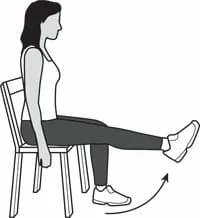
Single-Leg Deadlifts
- This exercise requires you to stand with both feet below your hips.
- Take a look at your left leg, which ought to be straight with a slight bend in it.
- Start pushing your right foot back with a straight leg, as if you were kicking the bottom of your foot against the wall behind you.
- At the same time that you begin to bend forward at the waist, extend your trunk forward until it nearly touches the ground.
- Your arms have to be horizontal to the floor, straight up, and shoulder height at all times.
- At the point of lowest elevation, your body should create a straight line from your head to the bottom of your right foot.
- Then, while maintaining your body’s straight posture, reach your right leg forward and raise your body until you are standing upright once more.
- Then return to your neutral position.
- Then relax.
- Repeat this exercise five to ten times.
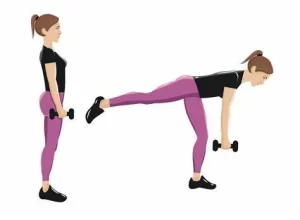
Calf Raises
- Place your feet hip-width apart and stand straight on a level surface.
- As you point your toes forward, keep your shoulders back and straight.
- Put your arms at your sides naturally while contracting your core.
- Now elevate both heels off the ground.
- Hold this position for a few seconds.
- Then return to your neutral position.
- Then relax.
- Repeat this exercise five to ten times.

Step-Ups
- Start by standing in a comfortable position.
- Put it on a step bench’s foot, the bottom step of a stairwell, or a platform.
- Try to maintain your height at hip level.
- With your knee bent, slowly lower your opposing foot to the ground.
- Put your toe lightly onto the ground, then step back up to claim your space.
- Then return to your neutral position.
- Then relax.
- Repeat this exercise five to ten times.

Side-Lying Leg Lifts
- To support oneself while lying on your side, raise the affected upper leg and flex the lower leg.
- keeping your knee firm but not locked.
- While lying flat, gradually elevate your upper leg to a 45° position.
- Hold this position for a few seconds.
- Then return to your neutral position.
- Then relax.
- Repeat this exercise five to ten times.
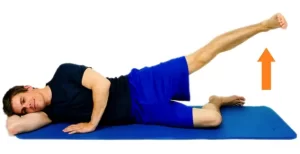
Hamstring Curls
- First, take a comfortable standing position.
- A hip’s width should separate your feet.
- Elevate one foot, bend the knee, and point the heel skyward.
- Stretch as much as you can while maintaining a straight upper body and forward-pointing legs.
- Hold this position for a few seconds.
- Then return to your neutral position.
- Then relax.
- Repeat this exercise five to ten times.
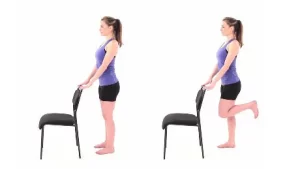
Straight Leg Raises
- First, find a comfortable place for yourself and lie down on the ground.
- Flex your knee lightly now.
- Next, gradually elevate your one leg.
- On the opposite side, maintain the knee straight.
- Hold this position for a few seconds.
- Then lower your leg.
- Then return to your neutral position.
- Then relax.
- Repeat this exercise five to ten times.
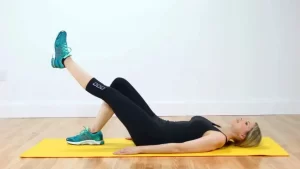
Wall Squats
- Place your feet away from the wall and your back and shoulders against it.
- Bend your knees while your back moves against the wall to form a squat.
- Your knees should be positioned above your ankles with a 90-degree bend.
- Maintain pressure on your back, upper body, and the wall.
- As you maintain this position, concentrate on tightening the muscles in your thighs.
- After that, slide back up the wall to where you started by pushing through your feet.
- Then relax.
- Repeat this exercise five to ten times.
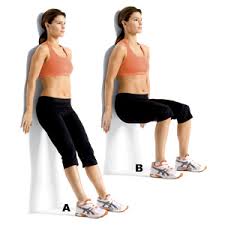
Single-Leg Balance
- Begin on the ground in a standing position.
- Keep your arms by your sides.
- Raise your foot back by bending one leg at the knee.
- Using the other foot for balance, stand up.
- Hold this position for a few seconds.
- Put the elevated foot down.
- Then return to your neutral position.
- Then relax.
- Repeat this exercise five to ten times.
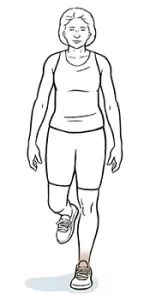
Clamshells
- You begin by lying on your side.
- Bend your elbow while lying on your left side.
- Then, use your left hand to lift the support to your head.
- Place your right leg on your left, then bend your knees to a 45-degree angle.
- Put your right hand on your hip or gently on the ground before you for balance.
- After that, lift your right knee carefully toward the sky while keeping your feet close to the ground.
- Hold this position for a few seconds.
- While maintaining a strong core, lower your right leg to meet your left.
- Then return to your neutral position.
- Then relax.
- Repeat this exercise five to ten times.
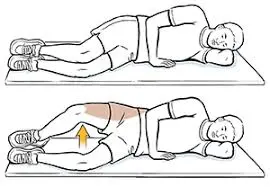
Lateral walks
- It is recommended to maintain the resistance band flat and not twist it while wrapping it around both lower limbs and above the knee.
- Step apart by the width of your shoulder.
- Though not stretched, a resistance band is tight.
- To engage the glute muscle, gently bend your knees and reach a half-squat position.
- The two legs of your body are bearing the same weight.
- Next, perform five to ten repetitions of sideways leg in and out.
- Then return to your neutral position.
- Then relax.

Lunges
- Place your feet hip-width apart as you begin in a standing stance.
- Take a step forward that is longer than a walking step, placing one leg in front of you and the other one behind your body.
- Your foot ought to touch the ground flat and stay that way throughout.
- As you go down, flex your knees to a slightly 90-degree angle.
- Always maintain an upright trunk and a tight core.
- Hold this position for a few seconds.
- After that, firmly push off with your front leg to get back to the beginning posture.
- Then relax.
- Repeat this exercise five to ten times.
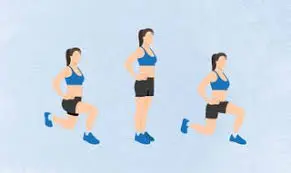
What Safety Measures Must Be Taken When Doing Knee Stability Exercises?
Exercise is generally beneficial to your general health and well-being, but there are a few safety considerations you should follow to reduce your risk of harm.
The following general safety measures should be considered when exercising;
- Get advice from a medical expert
Your physician should be consulted before beginning a new physical fitness plan if you have any underlying medical conditions, injuries, or concerns.
- Warming up and cooling down
Warming up correctly is important before starting any exercise routine; this might include light aerobic and dynamic stretching. Before engaging in activity, it helps in body warming and improves blood flow to the muscles. Similarly, cool down with low-intensity exercise and simple stretches to gradually drop your heart rate and prevent tense muscles.
- Put on the right clothes and shoes
Wear comfortable, loose-fitting clothing that won’t limit your range of motion during your exercise time. Wear sports shoes that are supportive, and stable, and provide the right comfort and stability for the activities you engage in.
- Modify exercises as required
Make necessary modifications to exercises if you have any special limits or injuries. To identify suitable alternatives or adjustments that are effective for you, get advice from a trained trainer or a member of the healthcare community.
- Utilize the proper form and technique.
Maintaining good form and technique is important for making the most of the exercise and preventing injuries. Take expert advice or help from a qualified trainer if you’re unclear about the correct form for any of the exercises to ensure that you’re doing them correctly.
- Keep yourself hydrated
Drink plenty of water both before and after your exercise session to make sure that you are well-hydrated. Dehydration may affect your performance and raise your chance of getting sick from the heat.
- Pay attention to your body
It’s important to stop and rest if you feel pain, feeling dizzy, or difficulty breathing. Trying to push through extreme pain or suffering can result in harm. See a doctor right away if symptoms appear.
- Proceed gradually
Don’t increase weight, length, or intensity too fast. To help your body adjust and reduce the chance of overuse problems, gradually increase the intensity of your daily activity. Understand your body’s limitations and avoid going overboard when it comes to exercising.
Keep in mind that each person has a unique level of fitness and ability, so it’s important to pay attention to your body and adjust the way you exercise accordingly. You may exercise safely and lower your chance of injury by following these measures.
When did you stop exercising your knees?
- If you were told by your doctor to avoid physical exercise for a few days.
- Stop exercising if you have any knee soreness.
- If you suddenly develop knee pain while you are working out, consult a doctor.
Summary:
Exercises for knee stability are necessary for building up the muscles that surround the knee joint, improving general stability, and reducing the chance of injury. Adding these exercises to your program can provide various benefits, including preventing injuries, increased stabilization of joints, greater performance, rehabilitation and recovery help, relief from knee pain, and improved functional movement.
When completing knee stability exercises, it’s important to keep in mind that proper form and progressive progression are essential. To create a routine of exercise that is specifically specific to your needs, it is recommended that you consult a trained physical therapist or healthcare provider if you have any underlying knee ailments or concerns.
Making knee stability exercises a priority can help you maintain strong, stable knees and lead an active, healthy lifestyle.
FAQ:
What is the knee’s most stable position?
Similar to all other structures that originate from the knee, they experience the most tension when in an extended (closed-packed) position, making them more stable than when in a flexed (open-packed) state.
What muscles help stabilize the knee?
The surrounding muscles of the knee joint can be used to move and stabilize it. The primary muscle groups are the quadriceps on the front of the knee and femur and the hamstrings on the rear.
How do you stabilize a loose knee?
To maintain the kneecap in place and immobilize the knee, use a knee brace. To reduce pain and swelling, use cold packs, nonsteroidal anti-inflammatory medications (NSAIDs), rest, and elevation. Physical therapy focuses on strengthening and expanding the kneecap-stabilizing muscles.
Having knee pain, should you still exercise?
Your already-existing knee pain shouldn’t get worse after exercising. Still, when the body adjusts to new movements, learning new exercises might occasionally result in temporary muscular soreness. The pain of this type will go away fast, and the next morning after exercising, your pain shouldn’t be any greater.
Why is stability important so much?
Gaining more balance or stability won’t keep you from falling in the future. Stability not only raises your level of general fitness but also improves your mobility, reduces your risk of injury, and makes it easier for you to push yourself during exercises.
References:
- Physiotherapist N. P. (2023a, 1 July). How to Perform the Top 11 Knee Stability Exercises and Their Benefits? – Mobile Physio. A mobile clinic for physical therapy. The 11-best knee stability exercises can be found at https://mobilephysiotherapyclinic.in.
- B. M. Physiotherapy (2022b), January 10. The Top 7 Activities to Strengthen and Stabilize Your Knees. Physiology of Body Motion. The seven best exercises for knee stability and strength are available at https://www.bodymotionphysio.com.au.
- Image 9, Balance on One Leg. (n.d.). Saint Luke’s Medical Center. Single-leg balance: https://www.saintlukeskc.org/health-library

